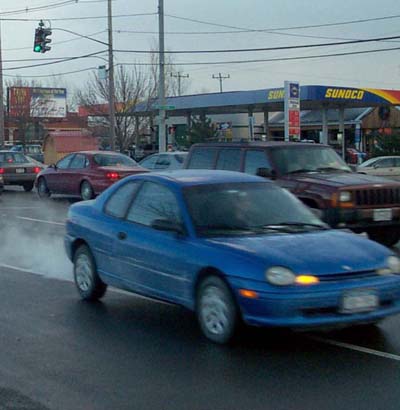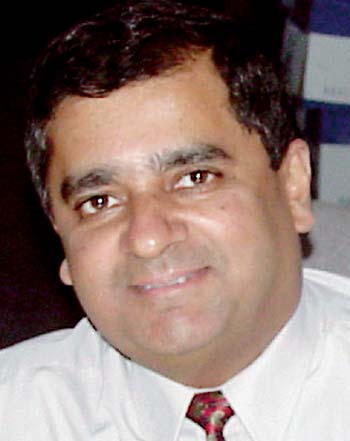| Campus News - JANUARY
15th, 2003
UB Engineers Develop Car Accident Prevention
Technology JACKIE BLACK - Faculty Student Relations Reporter
 |
| Faculty members and graduate
students from the School of Engineering and Applied Sciences
are researching automotive technology that will eliminate the
hazards of driving during inclement
weather. |
Drivers who brave the blistery winter weather of
Buffalo face the danger of careening off the slippery roads at any
moment — but researchers at UB are trying to make that threat a
thing of the past.
Mechanical engineers at UB have been working on
developing a new technology that will assist drivers in winter
weather conditions.
The project, headed by Tarunraj Singh, associate
professor of mechanical and aerospace engineering, used a driving
simulator to develop driver assistive technology to help prevent a
car from skidding off the road.
Roger Mayne, professor of mechanical and aerospace
engineering, and Thenkurussi Kesavadas, associate professor of
mechanical and space engineering, assisted in the project.
"One of the major achievements of this project was the
simulation of a car driving down an icy road, with the rear brakes
locked, making it easy for the car to spin out," Mayne said. "We
were able to develop a strategy where we gave the driver an audio
signal to prevent a spin out."
UB began the study approximately three years ago,
after receiving the Honda Initiation Grant, a yearly sum the Honda
Corporation awards to 10 groups across the country.
After completing the Honda project, Singh and Ann
Bisantz, assistant professor of industrial engineering, received
additional grant money from Veridian Corporation, to conduct further
research.
According to Kesavadas, who is director of the Virtual
Reality Lab, the driving simulator was invaluable to the research,
because it was able to simulate different weather conditions and
variables that affect driving, such as visibility and friction of
the car on the road.
Singh said the driver used headphones in the
simulator, and when he or she began to skid, a tone would sound in
the left or right ear indicating to the driver which way to turn.
The intensity of the signal would indicate how much to turn the
wheel.
The researchers also experimented with visual cues to
assist the driver. A light flashed on the right or left side of the
dashboard as the car began to skid, indicating which way to turn the
wheel. The color of the light indicated how much the driver had to
turn the wheel.
According to Singh, the visual cues were far less
successful than the audio, because in the event of extremely
difficult driving conditions, drivers do not have time to look
around.
Now that labs and simulators are fully equipped for
winter driving, Mayne said the engineers will begin testing the
technology on real cars in the near future.
"A practical implementation of this would be vibrating
devices in the steering wheel," said Mayne.
"Sensors make decisions regarding what the drivers
should be doing, and can detect problems such as wheels slipping and
spinouts much faster than humans can," said Singh.
Singh said researchers did not need to utilize new
technology to create these visual and audio cues, but can use
standard sensors in the car that are already being used for some
purpose, such as the car's anti-lock brake system.
Kesavadas said the virtual reality simulator itself
consists of a driving track for the vehicle, and a completely
three-dimensional driving range.
"The driving range is complete with 3D houses and
cultural data such as road signs and buildings," he said.
The project was not only a collaboration of mechanical
engineers, but graduate students also participated in the research.
Jae-Jun Kim, a mechanical engineering graduate student
who worked on the project, said these advancements are a step in the
right direction.
"Although more research should be done to implement
this driving method, Buffalo is certainly a place which would not
mind this new technology," stated Kim via e-mail.
According to Kim, the automobile's behavior is
optimized for each driver.
"This technology would not only aid the driver to cope
with bad weather conditions, but also read the behaviors of the
driver to help their safety in the future," he stated.
Jessica Gyurics, a junior psychology major, said the
driving cues would have helped her last winter in Buffalo.
"Last winter, my car was hit by another driver who
skidded in the parking lot," said Gyurics. "These advancements would
really help a driver's insurance costs." | 








